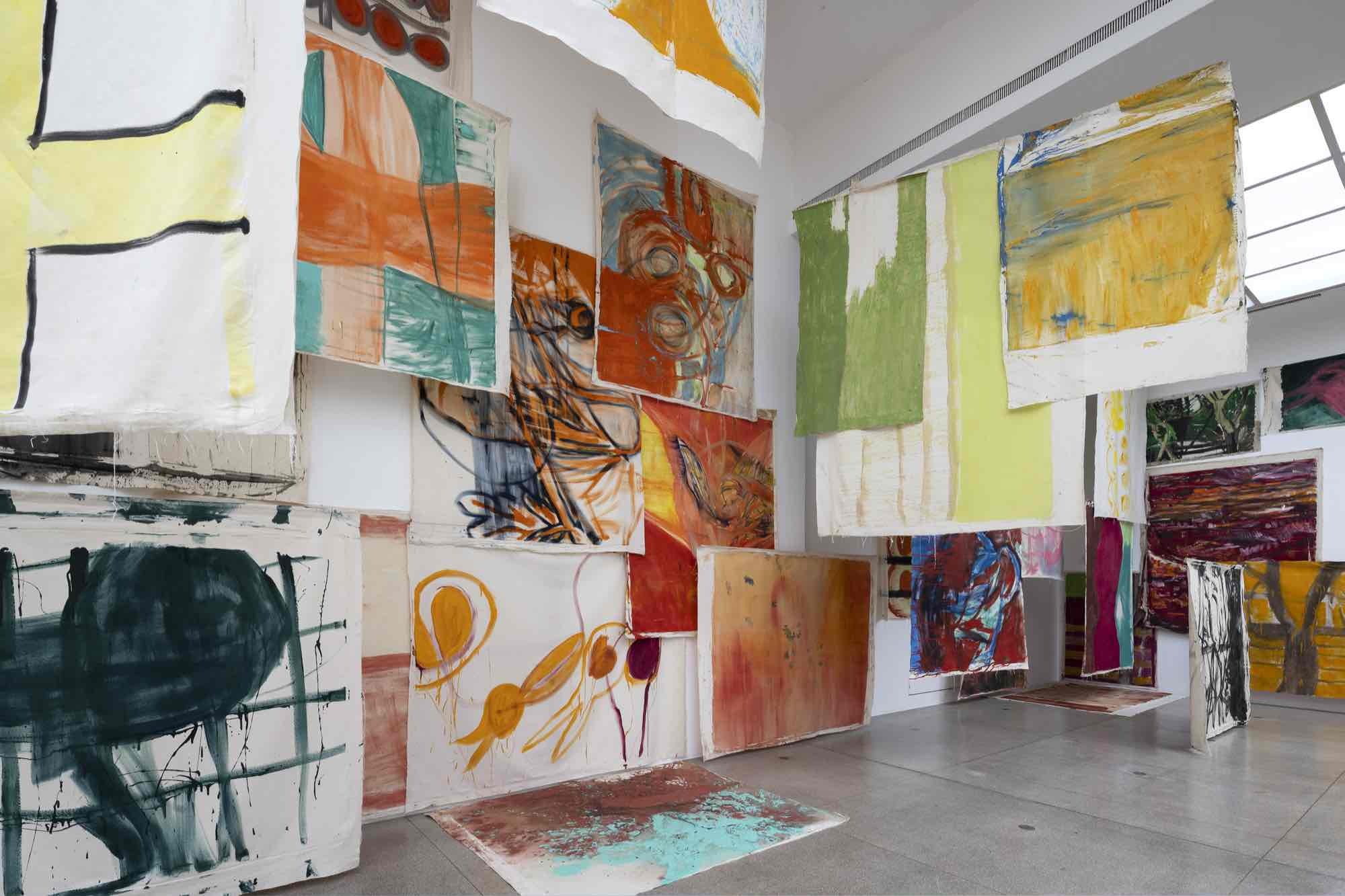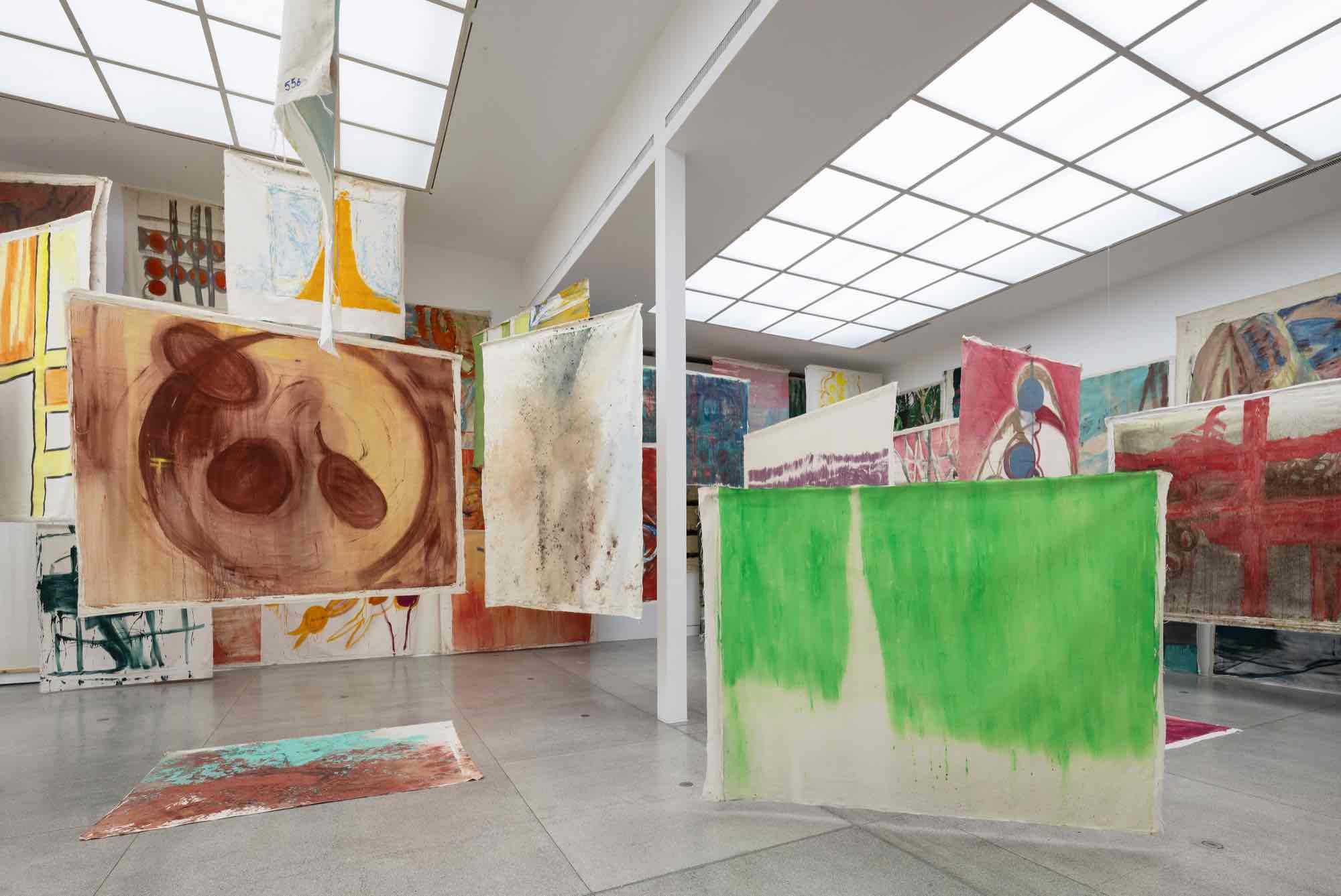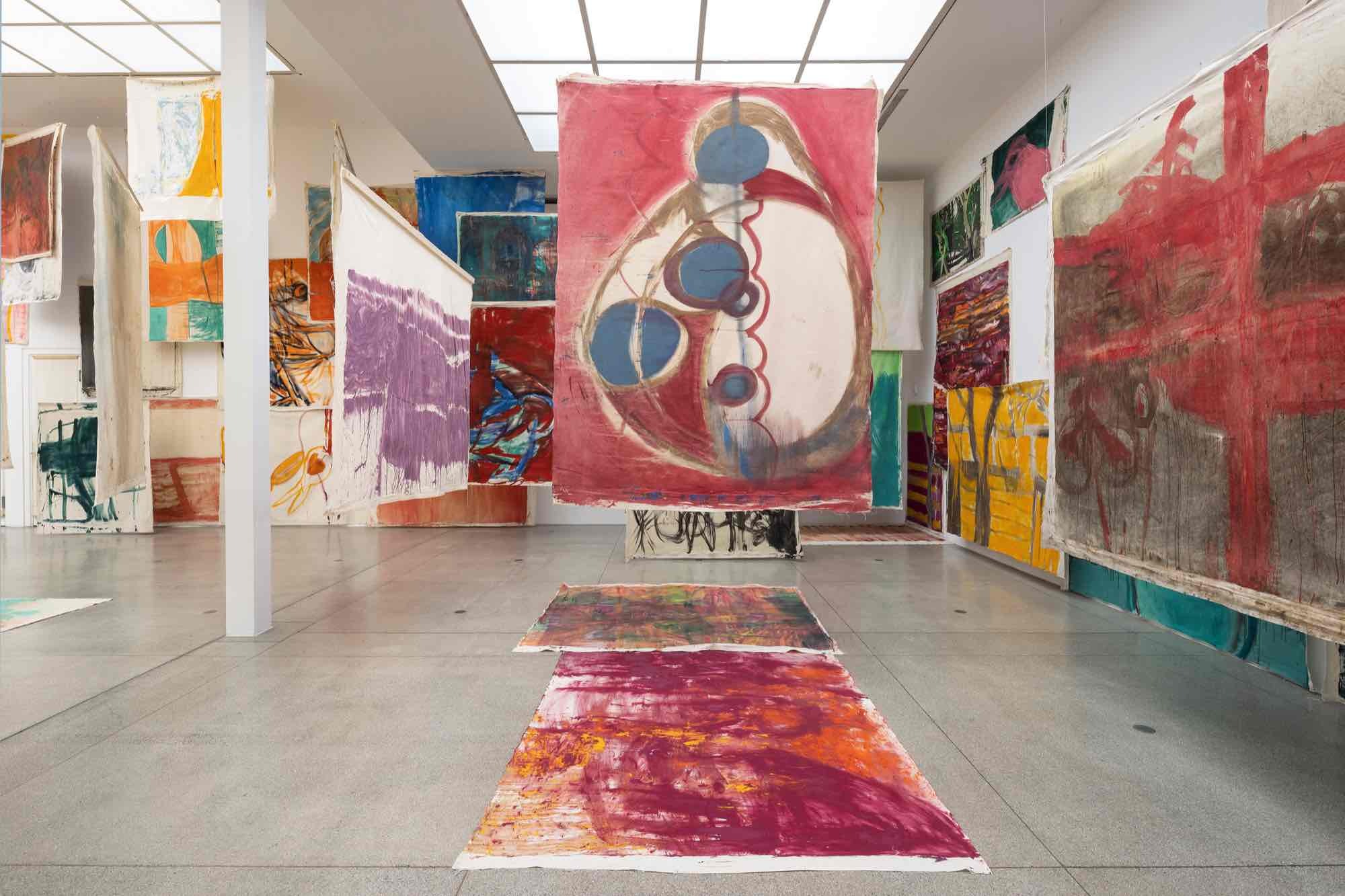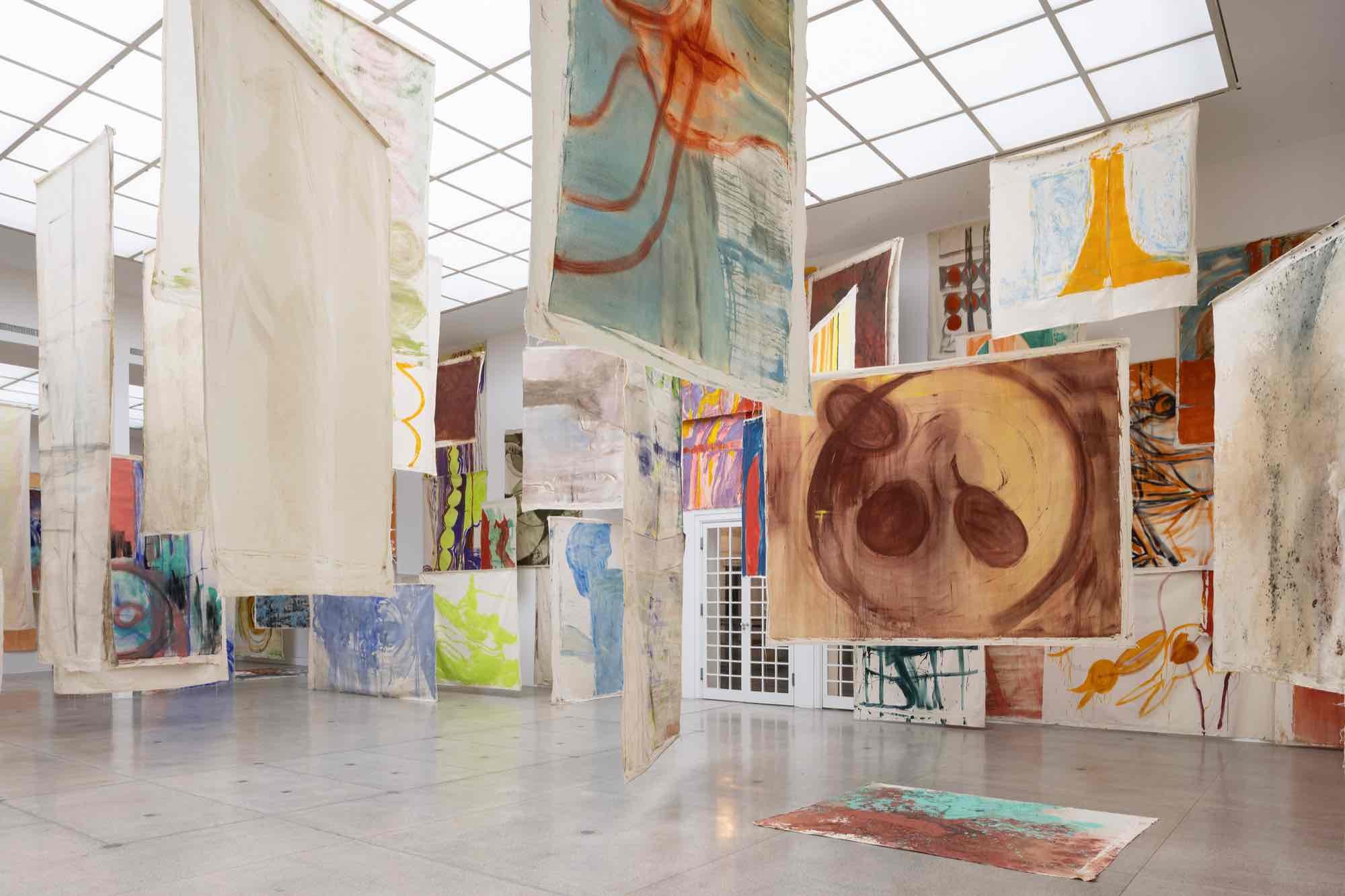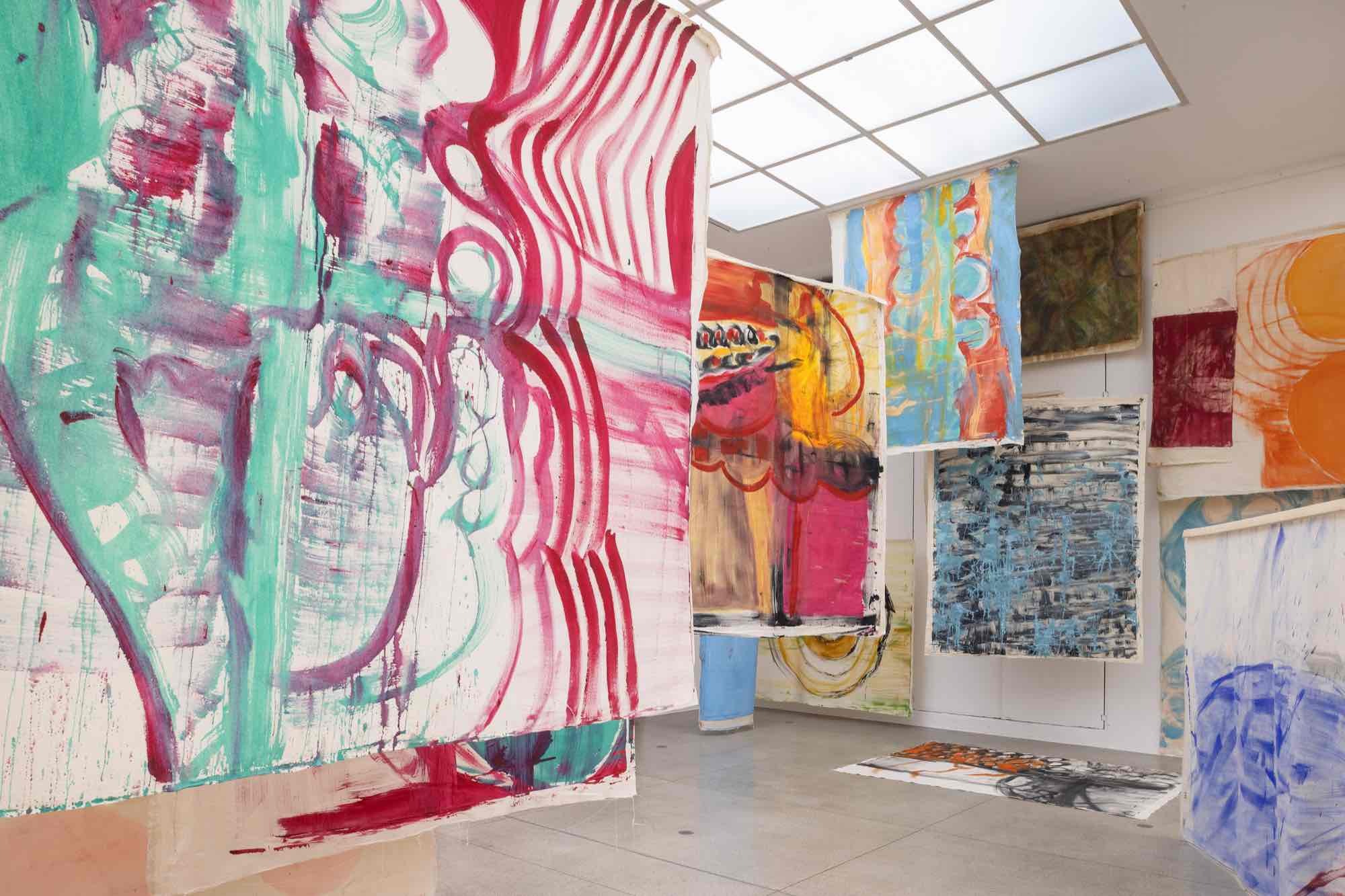Vivian Suter
A Stone in the Lake
28 Apr - 18 Jun 2023
The Secession’s iconic light-filled main gallery, which opens onto a small park behind the building, would appear to be the ideal setting for a presentation of the painter Vivian Suter’s oeuvre.
The Argentinean-Swiss artist has lived on a former coffee plantation in Panajachel on the shore of Guatemala’s volcano-ringed Lago de Atitlán since the early 1980s, at a far remove from the art world, which for years paid her little attention. More recently, however, she has garnered considerable acclaim and her work has been shown around the world, including, most prominently, at documenta 14 in Athens and Kassel (2017).
Informed by two devastating natural disasters in 2005 and 2010—vast landslides that coated her works, which she had stored in a barn, with sludge and ostensibly destroyed them—her painterly oeuvre reflects a close interplay between art and nature. The two events mark a turning point in the evolution of her creative approach, having profoundly and lastingly changed her understanding of authorship. She initially thought of the traces of the natural phenomena as destructive damage to her canvases, but then she radically changed her mind and began to conceive of the interplay with nature as a productive and creative process. She now works on her imposing paintings both in the studio and in the open air, deliberately exposing her compositions, typically in large formats and bold colors, to the elements. The tropical garden is the scene of a playful engagement with her materials, with canvases resting on the sandy ground or hanging from trees; dust, mud, leaves, mangoes, and insects leave their traces, as do her dogs, ambling over the canvases or taking a nap on them—her paintings are shaped both by organic processes, the principle of metamorphosis, and by coincidence.
The exhibition, the first comprehensive institutional presentation of her work in Austria, features around four hundred loose canvases, hanged in the artist’s characteristic style in a dense arrangement on the walls and suspended from the ceiling, creating a situation not unlike the one in which they came into being—amid the lush jungle-like vegetation on the artist’s land.
A door that is open to the park allows air to flow in that stirs the hanging canvases. It also lets in the ambient noise of the immediate surroundings—a blend of the din of traffic and birdsong. A second acoustic component is the fruit of a collaboration between Vivian Suter and her son Frank Wild: for the exhibition, they met in his sound studio to rerecord a song she wrote in the 1980s.
The exhibition is accompanied by a publication released by the Secession and GAMeC, including an intervention of Vivian Suter, essays by Lorenzo Giusti and Dieter Roelstrate on the connection between Suter’s art and her home and the surrounding landscape and a conversation with the artist about her family’s ties to Vienna with Jeanette Pacher. The richly illustrated book contains hundreds of photographs Suter took with her cell phone that document her creative process and everyday life in Panajachel.
Curated by Jeanette Pacher
The Argentinean-Swiss artist has lived on a former coffee plantation in Panajachel on the shore of Guatemala’s volcano-ringed Lago de Atitlán since the early 1980s, at a far remove from the art world, which for years paid her little attention. More recently, however, she has garnered considerable acclaim and her work has been shown around the world, including, most prominently, at documenta 14 in Athens and Kassel (2017).
Informed by two devastating natural disasters in 2005 and 2010—vast landslides that coated her works, which she had stored in a barn, with sludge and ostensibly destroyed them—her painterly oeuvre reflects a close interplay between art and nature. The two events mark a turning point in the evolution of her creative approach, having profoundly and lastingly changed her understanding of authorship. She initially thought of the traces of the natural phenomena as destructive damage to her canvases, but then she radically changed her mind and began to conceive of the interplay with nature as a productive and creative process. She now works on her imposing paintings both in the studio and in the open air, deliberately exposing her compositions, typically in large formats and bold colors, to the elements. The tropical garden is the scene of a playful engagement with her materials, with canvases resting on the sandy ground or hanging from trees; dust, mud, leaves, mangoes, and insects leave their traces, as do her dogs, ambling over the canvases or taking a nap on them—her paintings are shaped both by organic processes, the principle of metamorphosis, and by coincidence.
The exhibition, the first comprehensive institutional presentation of her work in Austria, features around four hundred loose canvases, hanged in the artist’s characteristic style in a dense arrangement on the walls and suspended from the ceiling, creating a situation not unlike the one in which they came into being—amid the lush jungle-like vegetation on the artist’s land.
A door that is open to the park allows air to flow in that stirs the hanging canvases. It also lets in the ambient noise of the immediate surroundings—a blend of the din of traffic and birdsong. A second acoustic component is the fruit of a collaboration between Vivian Suter and her son Frank Wild: for the exhibition, they met in his sound studio to rerecord a song she wrote in the 1980s.
The exhibition is accompanied by a publication released by the Secession and GAMeC, including an intervention of Vivian Suter, essays by Lorenzo Giusti and Dieter Roelstrate on the connection between Suter’s art and her home and the surrounding landscape and a conversation with the artist about her family’s ties to Vienna with Jeanette Pacher. The richly illustrated book contains hundreds of photographs Suter took with her cell phone that document her creative process and everyday life in Panajachel.
Curated by Jeanette Pacher



